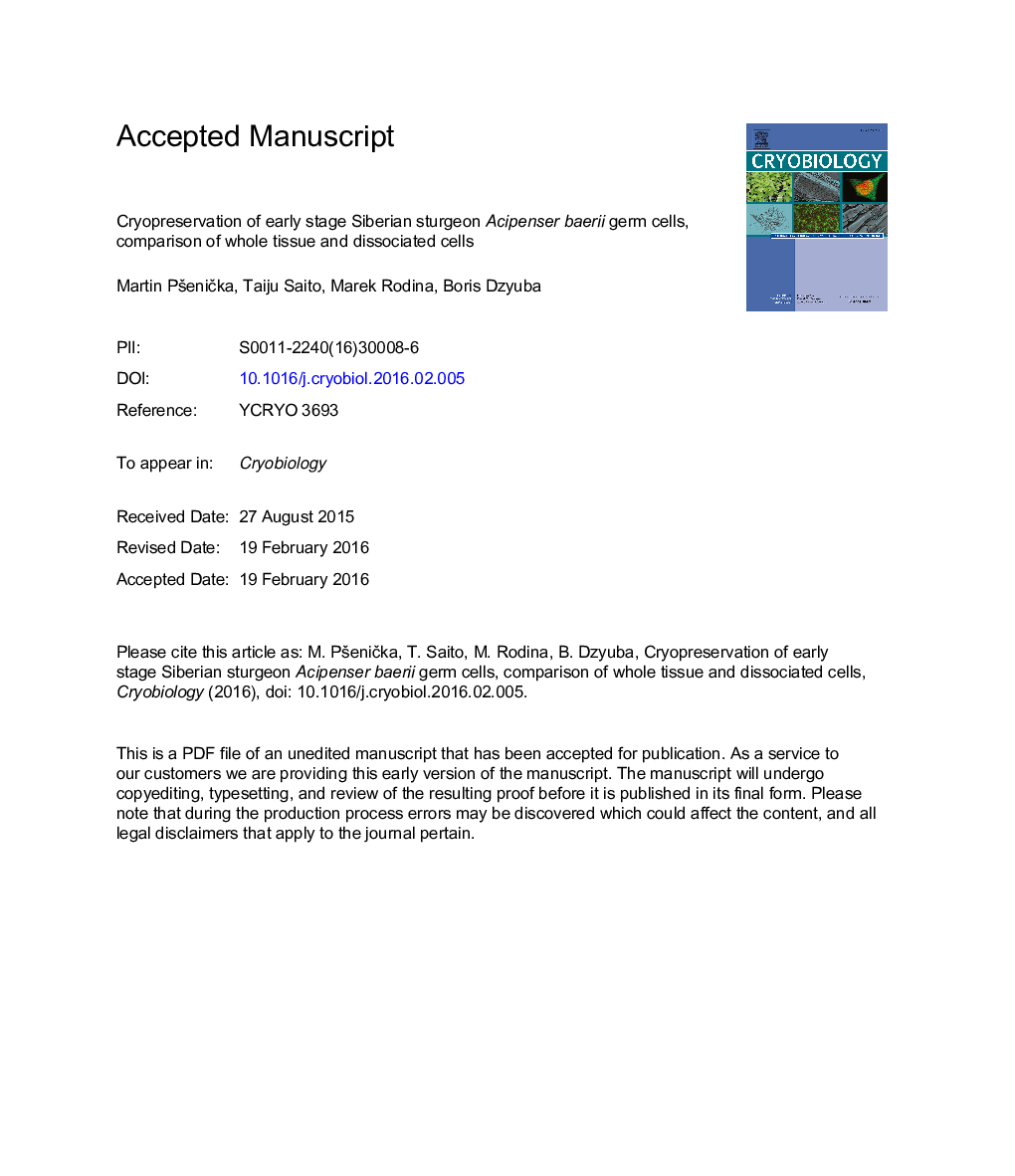| Article ID | Journal | Published Year | Pages | File Type |
|---|---|---|---|---|
| 10927653 | Cryobiology | 2016 | 18 Pages |
Abstract
Several sturgeon species are near extinction; therefore an efficient conservation strategy is required. Germ stem cells can be used for long-term storage and restoration of genetic information using surrogate reproduction. This study compared cryopreservation procedures of early stages of Siberian sturgeon Acipenser baerii testicular and ovarian cells. Whole gonad tissue or dissociated cells were frozen at a cooling rate of 1 °C/min in phosphate buffered saline with 0.5% bovine serum albumin, 50 mM glucose, and one of four different 1.5 M cryoprotectants: dimethyl sulfoxide, glycerol, ethylene glycol, or dimethyl sulfoxide with propanediol. The number of living cells obtained from 0.1 g of gonadal tissue after freeze/thaw of both whole tissue and dissociated cells was higher using ethylene glycol than with other cryoprotectants. Although there were no differences in the number of living cells in cryopreserved whole tissue vs. dissociated cells, the number of dead cells was lower with whole tissue cryopreservation, indicating that cells that died during freeze/thaw were digested during subsequent enzymatic dissociation. This resulted in more than 90% live cells after freeze/thaw and dissociation. The thawed tissue cryopreserved using ethylene glycol as protectant as well as fresh gonadal tissue were dissociated, and the cells were labelled by PKH26 and transplanted into larvae of sterlet Acipenser ruthenus. Ninety days post-transplant of both fresh and cryopreserved cells, introduced cells proliferated in more than half of the recipients.
Related Topics
Life Sciences
Agricultural and Biological Sciences
Agricultural and Biological Sciences (General)
Authors
Martin PÅ¡eniÄka, Taiju Saito, Marek Rodina, Boris Dzyuba,
